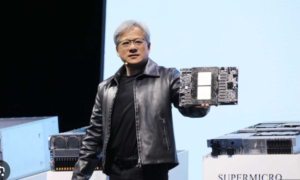According to the Fact.MR analysis, the vein recognition biometrics market is expected to develop significantly over the projected period of 2019 to 2029. The analysis identifies significant trends that are currently influencing the vein recognition biometrics market’s growth.
This comprehensive analysis, which was recently published, offers light on the major drivers that are predicted to shape the future of the vein recognition biometrics industry. As a result, renowned enterprises as well as rising players involved in the manufacture of vein recognition biometrics have thriving opportunities.
Global Vein Recognition Biometrics Market: Segmentation
The global vein recognition biometrics market has been segmented by technology, sector, solution, and region, as shown in the table below.
Technology
- Finger Vein Recognition
- Palm Vein Recognition
- Eye Vein Recognition
Sector
- BFSI
- Healthcare
- Manufacturing
- Services, Retail & Other Corporate
- Transportation & Utilities
- Others
Solution
- Hardware
- Software
- Services
Region
- North America
- Latin America
- Europe
- East Asia
- South East Asia
- Oceania
- Middle East and Africa
Biometrics for vein recognition will grow rapidly in the BFSI sector.
Data breaches and theft are becoming more common, increasing concerns about security measures in the finance industry in particular. Vein recognition biometrics, which are utilised for security purposes in the BFSI industry to safeguard clients from data theft and identity theft, are thus an appropriate and dependable option. Vein recognition biometrics are being used by banks and financial institutions in emerging countries like India, China, Argentina, Mexico, Brazil, and South Africa to authenticate the identity of their customers.
Vein recognition biometrics are more efficient and accurate than other forms of biometric systems, with a lower False Acceptance Rate (FAR) and False Rejection Rate (FRR), which is one of the main reasons for their increased popularity.
The Banking, Financial Services, and Insurance (BFSI) industry is expected to provide an absolute dollar opportunity worth US$ 704 million by the end of the forecast period, surpassing US$ 800 million. The healthcare industry is estimated to develop at a rate of about 2X that of the manufacturing sector, capturing a market share of 9% by the end of the forecast period.
With well-timed partnerships, the competition landscape will heat up.
Fujitsu Ltd, Hitachi Ltd, IdentyTech, NEC Corporation, M2SYS Technology, Mofiria, Futronic, Imprivata, IDEMIA, and others are among the main market players mentioned in the study. To extend their global footprint and commercial operations, leading manufacturers are always focused on product innovation and alliances. As an example,
Hitachi Europe Ltd, a wholly owned subsidiary of Hitachi Ltd, partnered with IT security distributor Alpha Generation in August 2019. Hitachi’s finger vein technology will be used to develop novel solutions as part of the agreement.
Fujitsu commenced sales of the “FUJITSU Security Solution AuthConductor V2” in November 2019, which uses a variety of authentication methods, including palm vein authentication, to provide clients with comprehensive biometric authentication capabilities.
Click Here To get a Sample Report (Including Full TOC, Table & Figures):-https://www.factmr.com/connectus/sample?flag=S&rep_id=1829



































